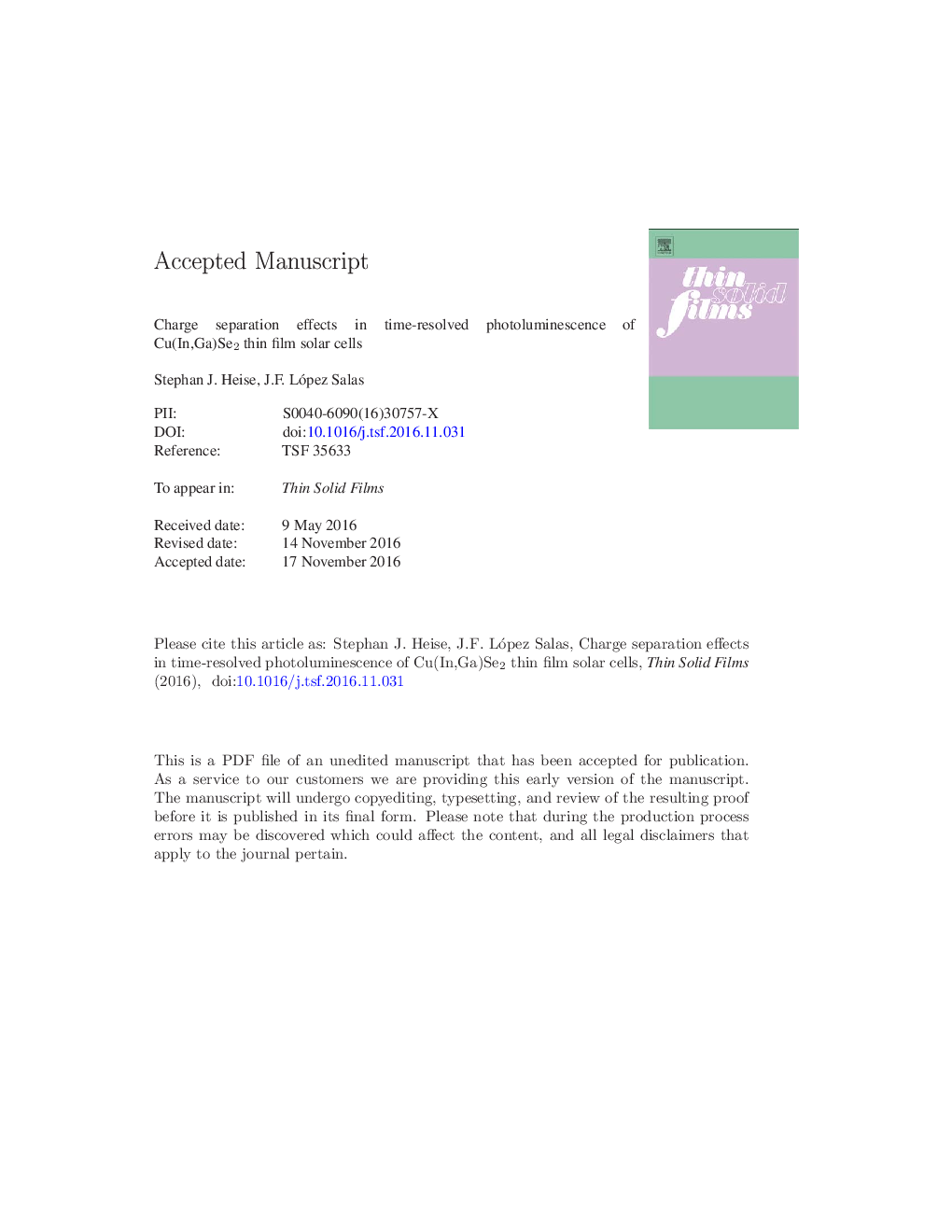| Article ID | Journal | Published Year | Pages | File Type |
|---|---|---|---|---|
| 5465915 | Thin Solid Films | 2017 | 19 Pages |
Abstract
Time-resolved photoluminescence (TRPL) is a powerful tool for investigating the charge carrier dynamics in semiconductors. Many mechanisms may contribute to the PL decay characteristics, such as radiative band-to-band recombination, non-radiative Shockley-Read-Hall recombination, capture and re-emission of minority carriers via trap states, as well as separation of the generated electron-hole pairs by gradients in their electrochemical potentials combined with different conductivities. In Cu(In,Ga)Se2 thin film solar cells charge separation has been shown to dominate the TRPL signal at low injection levels in complete devices whereas the PL decay in CdS-covered absorbers seemed unaffected by charge separation and has been reported to equal that of the bare absorber layer. In this study we investigate the PL decay of complete cells, CdS-covered absorbers and bare absorbers as a function of injection level. We show that the PL decay of not only the complete cell but also the CdS-covered absorber is dominated by charge separation at sufficiently low injection levels. In this injection regime the TRPL signal of the CdS-covered absorber significantly differs from that of the bare absorber, but also at higher injection levels different decay time constants are observed. By means of time-resolved device simulations we analyse the mechanisms of charge separation and their impact on the transient PL decay.
Related Topics
Physical Sciences and Engineering
Materials Science
Nanotechnology
Authors
Stephan J. Heise, J.F. López Salas,
